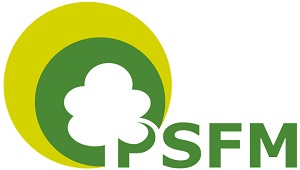ĐỔI MỚI CÔNG TÁC NGHIÊN CỨU VÀ CHUYỂN GIAO GIỐNG CÂY LÂM NGHIỆP PHỤC VỤ TÁI CƠ CẤU NGÀNH
Từ khóa:
Giống cây lâm nghiệp,, thành tựu, định hướng, tái cơ cấu ngành.Tóm tắt
Cải thiện giống cây rừng ở nƣớc ta đã đạt đƣợc một số thành tựu đáng kể nhƣ đã chọn đƣợc một số loài cây và xuất xứ có triển vọng nhất cho một số vùng sinh thái chính; Chiến lƣợc cải thiện giống dài hạn cho nhóm các loài cây trồng rừng chủ lực đã hoạch định rõ ràng nhằm tăng năng suất rừng
trồng và chất lƣợng sản phẩm cuối cùng; Các quần thể chọn giống và nhân giống đƣợc xây dựng trên khắp cả nƣớc để cung cấp hạt giống chất lƣợng cao cho sản xuất và phục vụ nghiên cứu. Nhân giống sinh dƣỡng cũng đã đƣợc nghiên cứu thành công cho nhiều giống tiến bộ kỹ thuật và đã chuyển
giao công nghệ nhân giống và giống gốc cho sản xuất. Tô ̀ n ta ̣ i chu ̉ yê ́ u la ̀ nhiều giống tiến bộ kỹ thuật vẫn chƣa đƣợc chuyển giao vào sản xuất, hệ thống nguồn giống và cán bộ quản lý giống tại các địa phƣơng còn thiếu và yếu. Để phục vụ đề án tái cơ cấu ngành lâm nghiệp, công tác chọn tạo giống
cây rừng trong thời gian tới sẽ pha ̉ i đƣợc thực hiện theo hƣơ ́ ng gắn kết chặt chẽ giữa nghiên cứu chọn giống truyền thống với ƣ ́ ng du ̣ ng công nghệ sinh học, khoa học gỗ, lâm sinh và sâu bệnh rừng; Tập trung chọn tạo giống phù hợp với từng loại lập địa ở từng vùng trô ̀ ng rƣ ̀ ng trọng điểm, theo từng mục tiêu sử dụng và sức chống chịu, tạo đa bội và con lai tam bội bất thụ cho các loài cây trồng rừng chủ lực có diện tích trồng rừng lớn ở Việt Nam. Ứng dụng một số công nghệ mới nhƣ chọn giống bằng các chỉ thị phân tử, biến nạp gene, tạo phôi nhân tạo, kích thích ra hoa sớm và mini - cutting,... vào
các chƣơng trình cải thiện giống nhằm nâng cao hiệu quả, rút ngắn chu kì chọn tạo giống và chuyển giao nhanh giống tốt vào sản xuất. Đẩy mạnh chuyển giao giống gốc và công nghệ xây dựng vƣờn giống, rừng giống chất lƣợng cao và công nghệ mô hom cho các địa phƣơng để chủ động sản xuất
giống phục vụ trồng rừng
Tài liệu tham khảo
1. Dweep C., 2007. “Relation between health and GNP”, http://www.planetd.org/2007/01/27/the - relation -between - health - and - gnp - india - and - china.
2. Harold H. Adem, Peter H. Jerie, Colin D. Aumann, Nicolas Borchardt, 2000. “ High yields and early bearing for Walnuts”. A report for the Rural Industries Research and Development Corporation.
3. Hoang TL, Simelton E, Ha VT, Vu DT, Nguyen TH, Nguyen VC, Phung QTA. Diagnosis of farming systems in the Agroforestry for livelihoods of smallholder farmers in Northwestern Vietnam project. Working paper no.161. Hanoi, Vietnam: World agroforestry centre (ICRAF) Southeast Asia regional program. 24p. DOI:10.5716/WP13033. PDF.
http://www.worldagroforestry.org/sea/publication?do=view_pub_detail&pub_no=WP0169 - 13.
4. Tshering G., FAO. “Technology for walnut production in bhutan”. Renewable natural resources research centre Bajo, Wangdue Phodrang. ftp://ftp.fao.org/docrep/fao/010/ah928e/ah928e04.pdf.
5. Young A., 1989. “Agroforestry for soil conservation”. Science and practice of agroforestry No. 4. Nairobi: ICRAF, 284pp.
6. http://en.wikipedia.org/wiki/Juglans
8. Data FAO: http://data.fao.org/dimension - member entryId=7c58c5c7 - 65a1 - 4296 - 83ae - fb9b7beec06b
9. Nutrient data (search for English Walnuts and Black Walnuts)". United States department of agriculture, 2010. http://ndb.nal.usda.gov/ndb/foods/list
10. Health benefit of Walnuts: http://thehealthbenefitsof.com/health - benefits - of - walnuts.
11. Yield of Walnut: http://data.fao.org/dimension - member?entryId=7c58c5c7 - 65a1 - 4296 - 83ae - fb9b7beec06b












